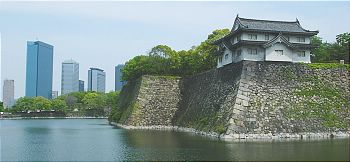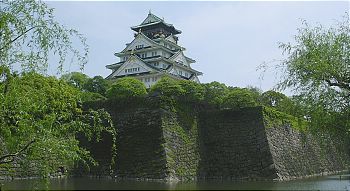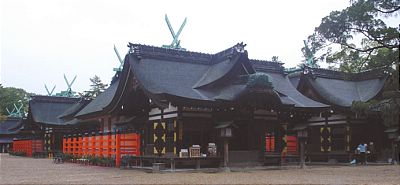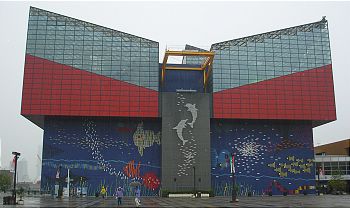Osaka

With a population of 2.5 million, Osaka is Japan's third largest and second most important city. It has been the economic powerhouse of the Kansai region for many centuries.
Osaka was formerly known as Naniwa. Before the Nara Period, when the capital used to be moved with the reign of each new emperor, Naniwa was once Japan's capital city, the first one ever known.
In the 16th century, Toyotomi Hideyoshi chose Osaka as the location for his castle, and the city may have become Japan's capital if Tokugawa Ieyasu had not terminated the Toyotomi lineage after Hideyoshi's death and moved his government to distant Edo (Tokyo).
Osaka Castle

Construction on Osaka Castle (Osakajo) started in 1583 on the former site of the Ishiyama Honganji Temple, which had been destroyed by Oda Nobunaga thirteen years earlier. Toyotomi Hideyoshi intended the castle to become the center of a new, unified Japan under Toyotomi rule.
However, a few years after Hideyoshi's death in 1615, Tokugawa troops attacked and destroyed the castle and terminated the Toyotomi lineage. Osaka Castle was rebuilt by Tokugawa Hidetada in the 1620s, but its main castle tower was struck by lightening in 1665 and burnt down.
It was not until 1931 that the present ferro-concrete reconstruction of the castle was built. Major repair works gave the castle new glamor in 1997.
Inside the castle is a museum that documents Toyotomi Hideyoshi's life and the history of the castle.
Sumiyoshi Taisha

Osaka's Sumiyoshi Taisha is one of Japan's oldest shrines. Founded in the 3rd century, before the influx of Buddhist architecture from the Asian mainland started, Sumiyoshi Taisha is one of the few shrines displaying a purely Japanese shrine architecture prototype (sumiyoshi-zukuri).
Osaka's Sumiyoshi Taisha is the most famous of over two thousand Sumiyoshi shrines in Japan. Enshrining kami (Shinto gods) believed to protect travelers, fishermen and sailors on the sea, Sumiyoshi shrines are usually found close to harbors.
Sumiyoshi Taisha is located in southern Osaka, a few steps from Sumiyoshi Taisha Station on the Nankai Main Line. From Nankai Namba Station, the train ride takes less than 10 minutes by local train (futsudensha). Note that faster train categories don't stop at Sumiyoshi Taisha Station.
The shrine can also be reached by the Hankai Tramway.
Osaka Aquarium

Osaka Aquarium, also known as Kaiyukan, is probably Japan's best aquarium. It introduces various forms of life inhabiting the Pacific Rim in a well organized and impressive way.
Marine life is displayed in 15 tanks, each representing a specific region of the Pacific Rim. The central tank, representing the Pacifc Ocean, is nine meters deep and home to a whale shark, the aquarium's main attraction.
Visitors start their tour of the aquarium on the 8th floor and slowly spiral down floor by floor around the central tank. Some of the tanks stretch over several floors, making it possible to observe the animals from different depths and perspectives.
Osaka Aquarium is located in the Tempozan Harbor Village of Osaka's Port area. The admission fee is a proud 2000 Yen per adult.